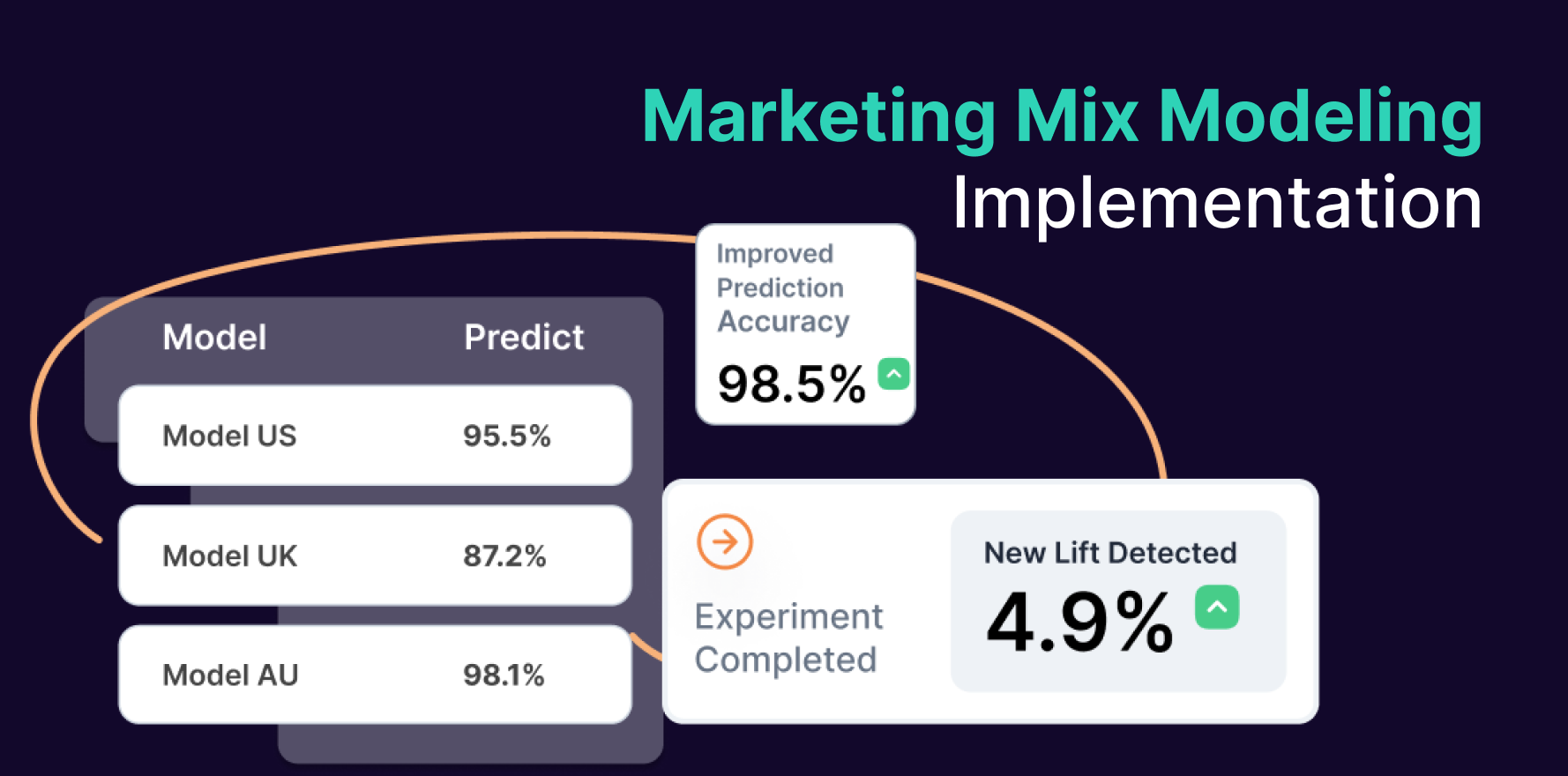As ecommerce continues to evolve, so does the intricate nature of understanding customer behaviors, especially in the context of cross-channel attribution. Cross-channel attribution, for those who don’t know, is the process of figuring out which marketing platforms led to a sale and giving credit where it’s due. As easy as it sounds, this is a field with a maze of customer touchpoints across many channels, from social media to email marketing, SEO to display ads, and more.
A report from Statista shows that by 2023, ecommerce sales are projected to account for over 22% of all retail sales worldwide. This digital evolution combined with the increasing complexity of the customer journey has made understanding cross-channel attribution a necessity, not a choice.
As Google’s Neil Hoyne famously said, “Attribution can be complex, but it’s also the closest you’ll get to the pulse of your customer.”
Buyers in the modern day are not tied to a single gadget or channel, but rather they hop from one to the next as they research products and make their final decisions. Given the prevalence of several channels, businesses must stop seeing their marketing initiatives as stand-alone initiatives and start thinking about them in terms of a holistic approach.
As a result, correctly attributing sales to their source channels is a monumental challenge with potentially huge benefits. Econsultancy found that 72 percent of marketers who used cross-channel attribution saw a substantial improvement in ROI. Yet, understanding how to navigate this complex landscape is a challenge many brands struggle with.
In this blog post, we’ll delve into the intricacies of cross-channel attribution, from its importance to effective implementation strategies, and how to leverage technology to make sense of it all. So, this blog is a must-read whether you’re a seasoned ecommerce pro or a business looking to amplify your digital presence.
What is Cross-Channel Attribution?
Let’s look at cross-channel attribution in more depth. A conversion in ecommerce usually means that a customer bought something from an online shop. Cross-channel attribution is a way to figure out which marketing platforms helped bring about a conversion.
For example, a customer might find out about a product through an ad on social media, then research the company’s website, and finally buy the product after getting an email with a discount code. In this case, each of these platforms played a part in the customer’s journey and helped them convert in the end.
Attribution models are used to assign credit to each channel involved in the customer journey. There are several different attribution models, including first touch, last touch, and multi-touch. Each model has its own strengths and weaknesses, and businesses must choose the one that best fits their needs.
Key Challenges in Cross-Channel Attribution
Although cross-channel attribution is a powerful tool, it comes with its own set of challenges. One of the biggest challenges is accurately tracking customer journeys across multiple channels. Different users may interact with a brand through a variety of touchpoints, including paid search, social media, and email. It can be difficult to track and measure every interaction along the customer journey.
Another challenge in cross-channel attribution is understanding the relative impact of each channel involved in the customer journey. Some channels may have a larger impact on the final conversion than others, so it’s essential to understand which ones to prioritize.
Despite these challenges, cross-channel attribution is a vital process for any ecommerce business that wants to understand the effectiveness of its marketing channels. By measuring the impact of each channel and optimizing their marketing campaigns accordingly, businesses can increase their ROI and drive more conversions.
The Role of Data in Cross-Channel Attribution
Collecting and analyzing data can help ecommerce businesses understand the customer journey and the impact of each marketing channel. This is especially important in today’s digital age, where customers interact with businesses through multiple channels, such as social media, email, and websites.
Collecting and Analyzing Data
For an effective cross-channel attribution measurement, marketers need to gather data from marketing campaigns. This data includes information on website traffic, conversion rates, and customer behaviors. As businesses delve into this data, they can spot the channels driving conversions most effectively, and those that require enhancement.
Moreover, the practice of actively collecting data about customer behaviors paves the way for a deeper understanding of the customer journey. It uncovers insights into how customers engage with various channels, whether their initial interaction with a business arises from social media or a search engine. Equipped with this understanding, marketers can fine-tune their marketing campaigns to better target customers at each step of their journey.
Integration and Unification: The Key to Data Mastery
Integration and unification of data stand at the heart of successful cross-channel attribution. Integrating data from diverse sources, businesses can gain a holistic view of the customer journey. This process involves the unification of data from online platforms such as Google Analytics, Facebook Ads, and email marketing campaigns.
Let’s consider an example where a business employs Google Analytics for tracking website traffic and conversion rates while leveraging Facebook Ads to funnel traffic to their website. In actively integrating data from both these sources, the business can garner a clearer understanding of how Facebook Ads contribute to conversions on their website.
Ensuring Data Accuracy and Consistency
If data is correct and consistent, it can help figure out who did what and why. Businesses can ensure data accuracy and consistency by establishing quality control processes and using attribution tools.
The customer journey can be better understood and marketing efforts can be optimized to increase conversions if businesses collect, analyze, and integrate data from several sources while maintaining data accuracy and consistency.
To get more insights watch – Mastering Cross-Channel Attribution: Unleash the Power of Fb, TikTok, Google & Snapchat Ads!
Cross-Channel Attribution Models
There are several different cross-channel attribution models available for businesses to use, each with its own strengths and weaknesses. The model used depends on the unique needs of the business and the channels used in their marketing campaigns.
Single-Touch Attribution Models
Single-touch attribution models give credit for a conversion to a single touchpoint in the customer journey. This could be the first touchpoint (such as a social media ad) or the last touchpoint (such as a paid search ad).
While single-touch attribution models are simple and straightforward, they can be overly simplistic and fail to account for the full customer journey.
For example, a customer may have seen a social media ad, clicked through to the website, and then returned later to make a purchase after seeing a retargeting ad. In this case, a single-touch attribution model would only give credit to the social media ad, ignoring the other touchpoints that played a role in the conversion.
Multi-Touch Attribution Models
Multi-touch attribution models take into account all touchpoints in the customer journey. This could include a combination of paid search, social media, email, and other channels. Multi-touch attribution models typically give different levels of credit to each touchpoint, based on its role in the customer journey.
While multi-touch attribution models are more complex than single-touch models, they provide a more accurate picture of how different touchpoints work together to drive conversions. However, it can be challenging to determine the appropriate weight to assign to each touchpoint, as different touchpoints may play different roles depending on the customer and the product being sold.
Custom Attribution Models
Custom attribution models are tailored to the specific needs of a business. They allow businesses to assign credit to touchpoints based on their unique business requirements. For example, a business may assign more weight to touchpoints that lead to higher-value purchases or to touchpoints that are more effective in driving repeat purchases.
Custom attribution models require more effort to set up and maintain than pre-built models, but they can provide more accurate and actionable insights for businesses.
Implementing Cross-Channel Attribution
Implementing cross-channel attribution is a complex process that requires a strategic approach to tracking and analytics, aligning marketing channels and strategies, and evaluating and optimizing campaign performance. In today’s digital age, businesses need to have a clear understanding of how their marketing channels are performing and how they can optimize their campaigns to drive conversions and revenue.
Setting Up Tracking and Analytics
Setting up tracking and analytics is a crucial step in implementing cross-channel attribution. This involves installing tracking code on your website, setting up event tracking, and enabling ecommerce tracking. By having these tools in place, businesses can measure the effectiveness of each marketing channel and track the customer journey from start to finish.
One important consideration when setting up tracking and analytics is to ensure that you are tracking the right metrics. While metrics such as click-through rates and impressions can be useful, they only provide a partial view of your marketing performance. To get a complete picture, businesses need to focus on metrics such as conversion rates, customer lifetime value, and return on ad spend.
Aligning Marketing Channels and Strategies
Aligning marketing channels and strategies is another critical step in implementing cross-channel attribution. This involves creating a cohesive omnichannel strategy that ensures consistent messaging across all channels. By having a clear understanding of your target audience and their preferences, businesses can create a marketing strategy that resonates with customers across all touchpoints.
Another key consideration when aligning marketing channels and strategies is identifying the most effective channels for driving conversions. This involves analyzing customer behavior and channel performance data to determine which channels drive the most revenue. By allocating resources to these channels, businesses can optimize their marketing spend and maximize their return on investment.
Evaluating and Optimizing Campaign Performance
Evaluating and optimizing campaign performance is the final step in implementing cross-channel attribution. This involves regularly reviewing data on conversion rates, traffic, and customer behavior to identify areas for improvement. By analyzing this data, businesses can make data-driven decisions about their marketing campaigns and optimize their strategies to drive better results.
One effective way to evaluate and optimize campaign performance is to conduct A/B testing. This involves testing different versions of your marketing campaigns to determine which version performs best. By testing different variables such as ad copy, landing pages, and calls to action, businesses can identify the optimal combination of elements to drive conversions.
Conclusion
Cross-channel attribution is a powerful tool for ecommerce businesses looking to optimize their marketing strategies. By measuring the impact of each marketing channel, businesses can make informed decisions about where to allocate their resources and improve their ROI.
However, cross-channel attribution also comes with its own set of challenges. To effectively measure cross-channel attribution, businesses need to collect and analyze data, choose the right attribution model, and align their marketing channels and strategies.
You may also like
Essential resources for your success
























































